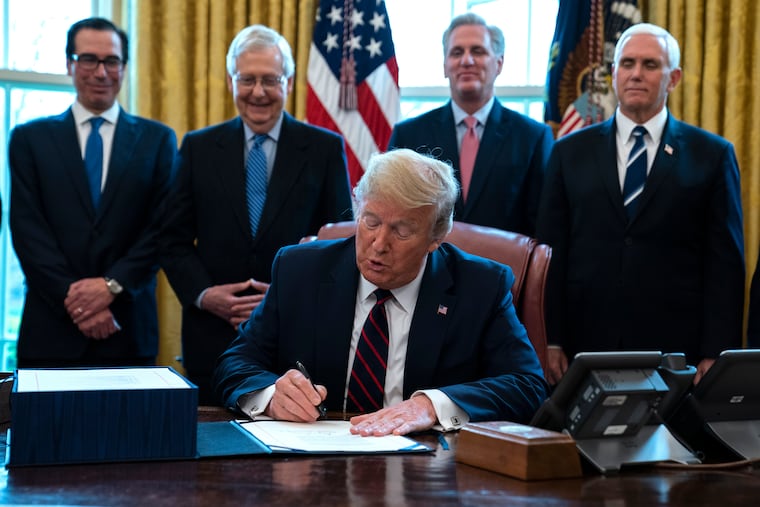Congress’ relief bill brings more PPP biz loans, even if you borrowed in the first round
Congress has opened up the window again for Paycheck Protection Program loans, which businesses say they sorely need to survive.

Congress has passed a bipartisan bill offering as much as $284 billion more for Paycheck Protection Program (PPP) and Economic Injury Disaster loans, representing a little more than half the size of the first round’s $500 billion.
For struggling businesses, a second round of money could make the difference between survival and closing up shop.
The most welcome change? Small business owners who receive PPP loans — whether last round or the next round — can deduct the expenses that the loans cover.
The American Institute of CPAs CEO, Barry Melancon, said this latest COVID-19 relief bill provides “much-needed economic relief to struggling businesses by ensuring expense deductibility under the PPP is honored, as was intended by the CARES Act.”
Many business owners took out PPP loans earlier this year. The legislation changes some rules about existing PPP loans, according to Justin Elanjian, CPA and partner with Aprio accounting firm. Caveat: These are in legislation that is likely to be signed by President Donald Trump:
More expenses included in loan forgiveness. New eligible expenses may include operations, property damage costs, supplier costs, and worker-protection expenditures.
Changes to tax implications of PPP funds: Business leaders pushed hard for this fix. Loan that are forgiven cannot be taxed.
Simplified application for loans under $2 million: Forgiveness of loans up to $150,000 will require a one-page online or paper form with borrower certifications; loans of $150,000 to $2 million may have simplified documentation requirements, as well.
» READ MORE: Who gets $600 stimulus checks? When will they arrive? What help will small businesses get? Here are some answers.
Second round of PPP
The latest relief bill includes changes that are exclusive to the second round of PPP loans, said David Zalles, a CPA based in Blue Bell.
Additional PPP loan funds made available: $267.5 billion in PPP loan funds would be on offer through the same channels — banks, non-bank lenders and community development finance institutions — plus an additional $20 billion for Economic Injury Disaster Loans through the Small Business Administration. Those are grants to businesses in low-income communities.
More eligible businesses can apply for PPP funding: Even if you got a PPP loan last time, you can apply again for a so-called PPP2 loan.
Previous PPP recipients can borrow up to $2 million, provided they have fewer than 300 workers and can show a 25% gross revenue decline in any 2020 quarter compared to the same quarter in 2019.
First-time PPP borrowers will be subject to the program’s original eligibility rules from March, so loans are available to businesses with 500 or fewer employees, and you don’t have to demonstrate a revenue loss.
Calculating the maximum loan amount: The most you can borrow is 2½ months worth of the average payroll for the last 12 months, unless you’re in a restaurant or food service business, in which case the loan amount can equal up to 3½ months’ payroll.
Set-aside for small business, independent contractors and self-employed: $25 billion of the total allotment is earmarked for businesses with 10 employees or fewer as of Feb. 15, 2020.
» READ MORE: City of Philadelphia offers some BIRT tax refunds to beleaguered business owners
New nonprofit and lobbying entities now eligible: 501(c)(6) organizations that were previously ineligible in round one may now be able to borrow in PPP Round Two. These organizations are “tax speak” for chambers of commerce; trade associations; real estate boards; professional associations; some sports leagues; boards of trade, and business leagues.
To qualify, these must have 150 workers or fewer and no more than 15% of their gross receipts must come from lobbying. Under IRS guidelines, these are technically nonprofit entities. But unlike 501(c)(3) nonprofits, these can engage in political activities.
Need help applying?
The bill requires the Small Business Administration to start disbursing money no later than 10 days after the legislation is signed into law.
The Enterprise Center, Greater Philadelphia Hispanic Chamber of Commerce, Asian American Chamber of Commerce of Greater Philadelphia, and the Urban League of Philadelphia launched the “Get Your Documentation Ready NOW” campaign to prepare local minority-owned businesses to submit PPP applications for when the SBA opens the window.
To learn more and sign up for assistance, go to theenterprisecenter.com/capital/pppready.
The Business Center and Temple University’s Small Business Development Center are also offering free help to small business owners.
The U.S Chamber of Commerce has created a guide for PPP loans posted here: https://www.uschamber.com/report/guide-small-business-covid-19-emergency-loans
Business owners can also call their banker, accountant or lender for help.